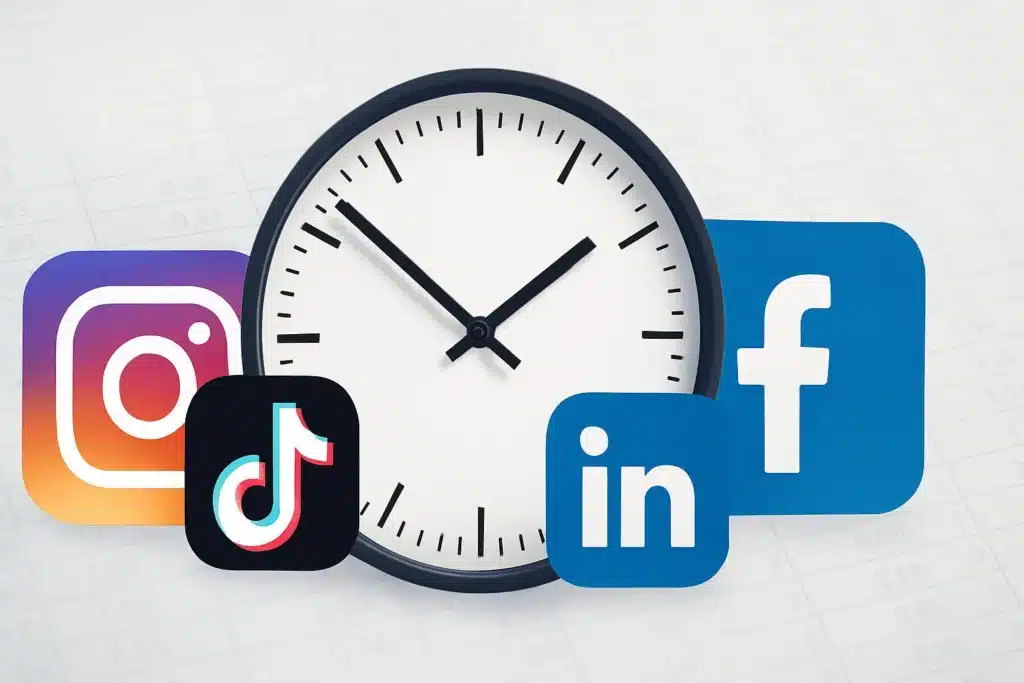
If you believe social media is important in higher education—this article is for you.
Because here’s the truth: Social media is one of the most powerful tools we have to build community, influence enrollment, increase retention, and shape perception. But too often, it’s treated like an afterthought—something that can be handed off, squeezed in, or added to a long list of other priorities without the necessary time or investment.
If we truly believe social media is important, we have to stop pretending it can be done well without proper resources.
The Problem: The Expectation-Execution Gap
Higher ed institutions typically fall into one of two extremes:
1️⃣ They want more social—more platforms, more videos, more reach—but allocate little to no resources to support it.
2️⃣ Or they don’t prioritize social at all and fail to recognize its impact—missing out on the most direct line to today’s students.
Both are problematic. And both put social media managers in impossible situations.
Social Media Is Powerful, But Only When Done Right
I’ve seen what great social media can do. It builds trust with prospective students before they ever apply. It helps current students feel seen, supported, and successful. It humanizes the institution. It tells real stories.
Social media management has existed for over 15 years, yet many institutions still treat it like an entry-level task that just about anyone can do in their spare time. It’s often viewed as simple, fast, and reactive.
The truth is, effective social media requires strategy, creative planning, trend awareness, cross-campus coordination, content production, and ongoing engagement.
Take video content as an example. Even one short Instagram Reel might involve:
- Scripting and storyboarding
- Aligning it with brand voice and strategic messaging
- Scheduling students or faculty for participation
- Shooting and editing
- Writing copy, selecting audio, getting approvals…
That’s hours of work—and most of it goes unseen. These hidden costs led me to ask a simple question:
What if we could quantify the time and effort behind a college’s social media presence—and use that data to advocate for better support and smarter strategies?
Turning Frustration Into a Tool for Change
➡️ That’s what inspired me to create the Social Content Capacity & Resource Planner Calculator.
The goal was simple: give social media managers and marcom teams a way to estimate the real time required to create content for different platforms, based on content volume and posting frequency. This lets institutions:
- Compare in-house capacity with actual workload
- Understand the resource gap (often much larger than expected)
- Make informed decisions about where to scale, pause, or invest
- Advocate for support using quantifiable data
- Prove that no, it’s not humanly possible to tailor content to six platforms with 10 hours a week
- Prioritize platforms realistically instead of saying yes to everything
- Make data-driven cases for additional staff, student ambassadors, or platform prioritization
For Example:
Based on my 📄 Assumptions, creating content for six platforms takes about 2,000 hours per year—the equivalent of 1.85 full-time employees.
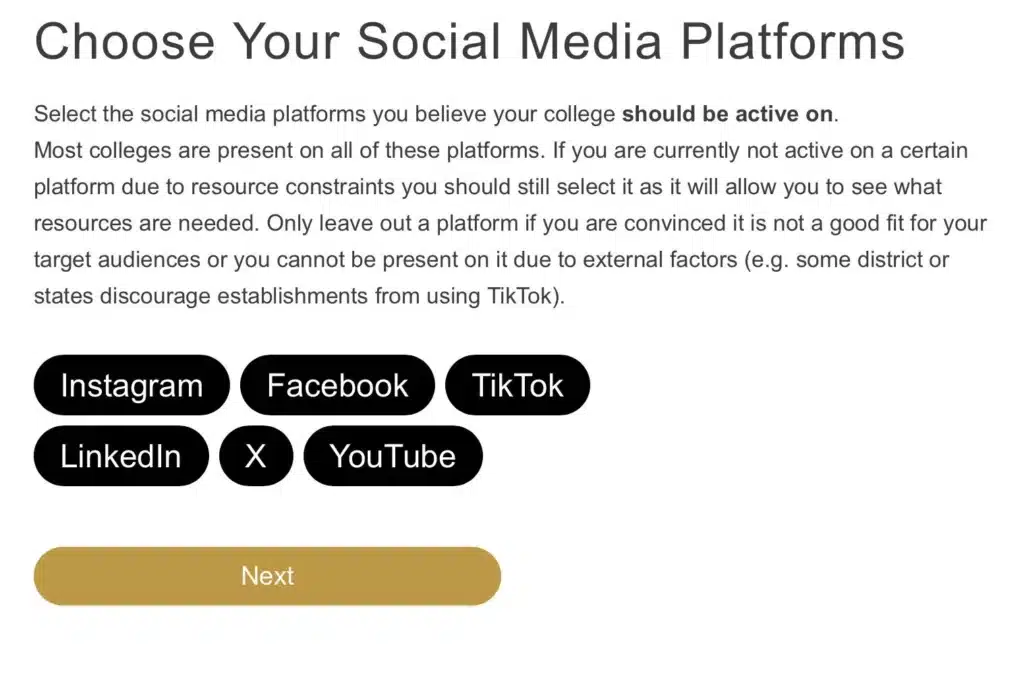
If you only have 20% of one person’s time allocated to social media? You’re covering 11% of the need. That’s not a strategy—that’s a slow burn to burnout.
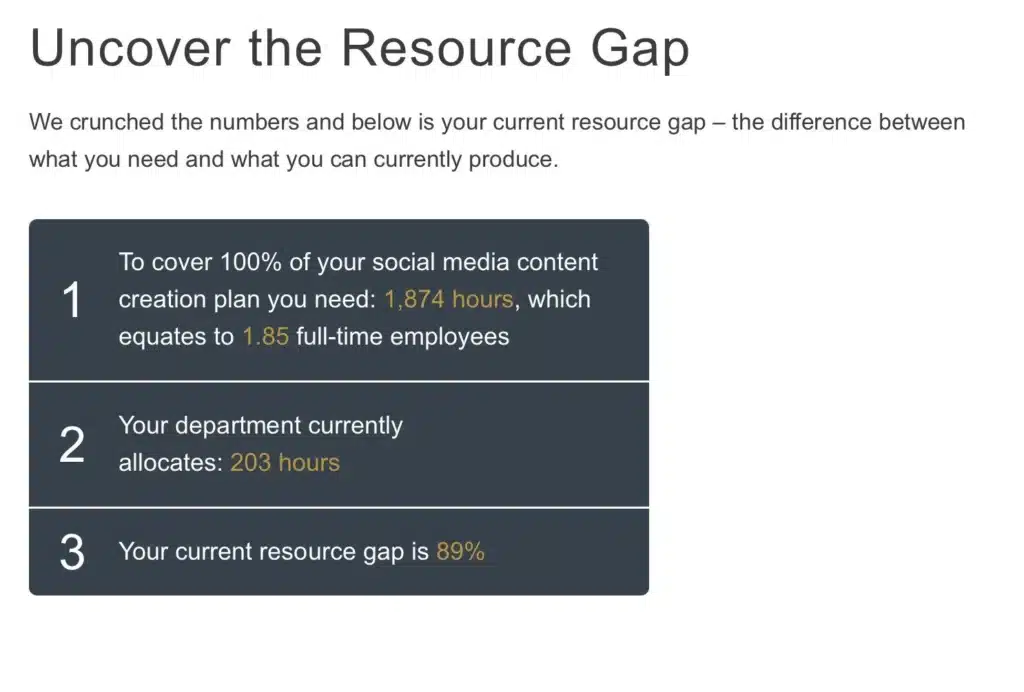
If You’re in Social Media, You’re Not Alone
I was lucky to work at institutions where leadership understood the value of social media and supported the work we did. I didn’t take that for granted.
But I also know that’s not the norm.
So many social media professionals I talk to are navigating unrealistic expectations, limited resources, or a complete lack of recognition for the role they play in student success, enrollment, and retention.
This tool exists to help shift that conversation.
Because once you see the gap—you can talk about it.
Once you can measure it—you can advocate.
And once you share it—you help others do the same.
“See? It’s not just me.”
Where Social Media in Higher Ed Is Headed
As AI content floods every feed and paid ads lose their edge, authenticity will win.
That means:
- More student-created content
- More employee advocacy
- More focus on human stories, not polished promos
The schools that stand out will be the ones that sound like people, not institutions.
And the only way to get there is by investing in your people—your team, your students, your storytellers
The calculator always helps you estimate how addition of student workers can augment your current strategy and help minimize existing gap.
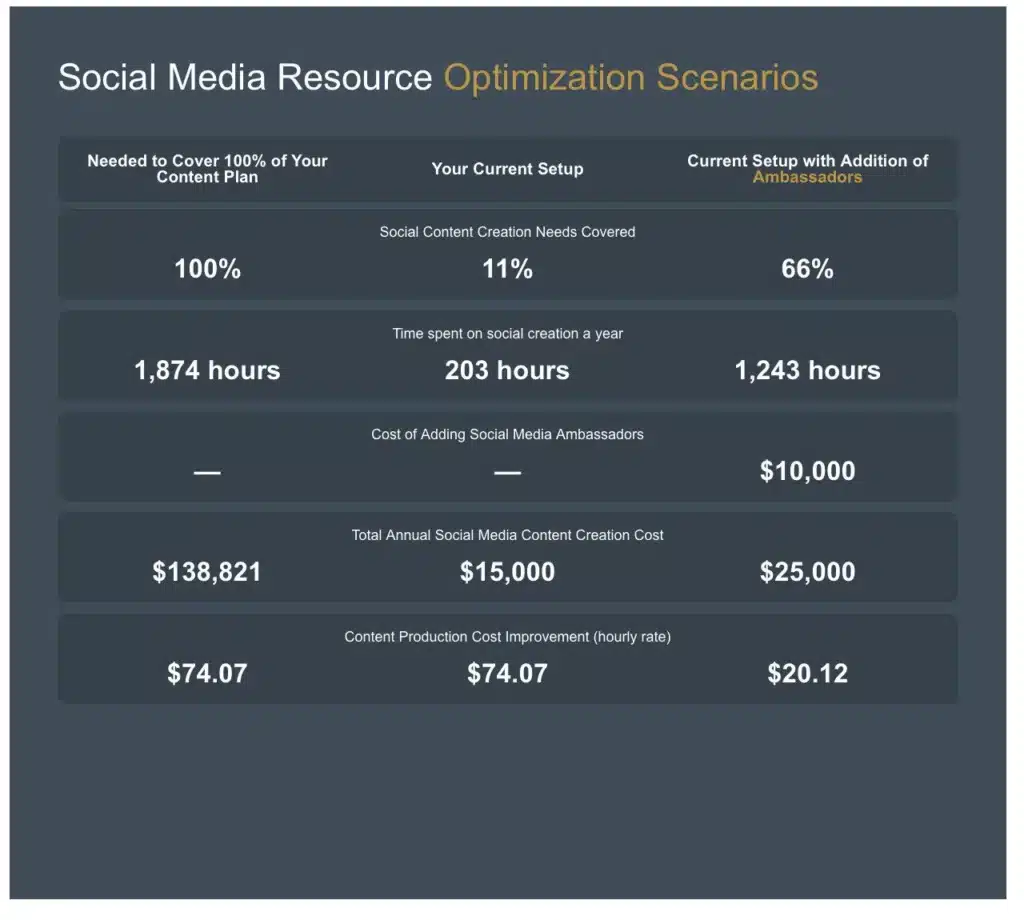
Want to Get Serious About Social? Start Here.
If your institution is ready to take social seriously, here’s what I recommend:
- Clarify Your Goals – Tie them to enrollment, retention, student engagement, or reputation.
- Assess Your Resources – Use the calculator to understand your current capacity.
- Advocate With Data – Don’t just say you need help—show why.
🧮 Try the Social Media Resource Calculator
📄 View the calculation assumptions
🎧 Want to go deeper?
I recently joined the Higher Ed Storytelling University podcast to talk about how higher ed can unlock the full potential of social media. If you liked this article, you will enjoy the episode as well.
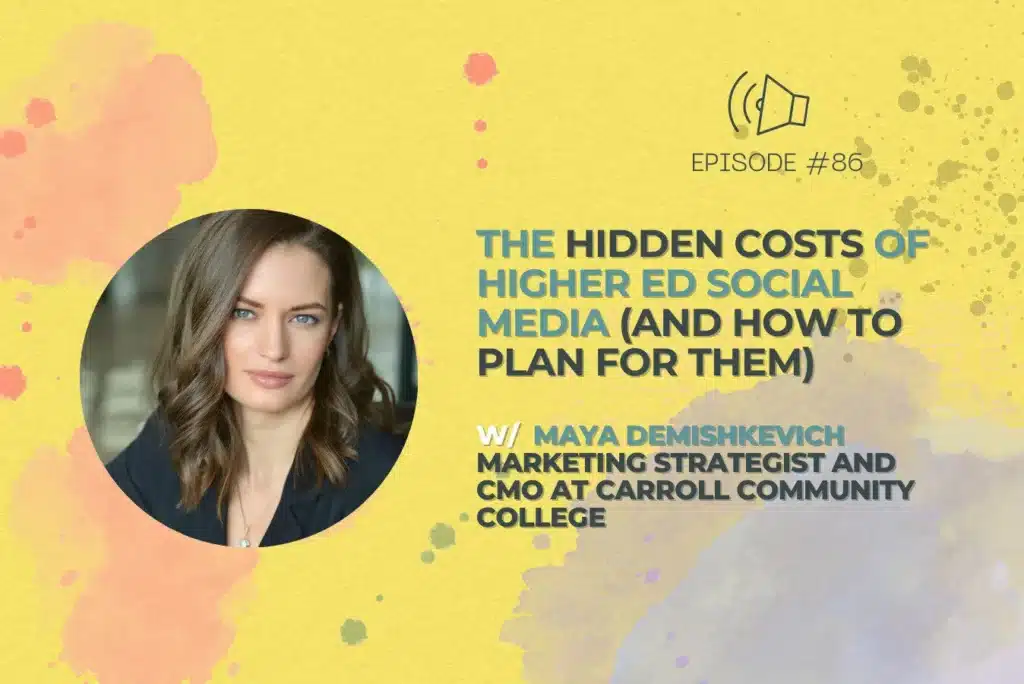
👉 Listen to Episode 86 – The Hidden Costs of Higher Ed Social Media (And How to Plan for Them)
